#Desmodium
Text



Few-flowered Tick-trefoil
Hylodesmum pauciflorum
This species is somewhat uncommon in Missouri and is scattered throughout areas of the southeastern United States. It prefers bottomland or mesic forests with moist, alkaline soils.
Aug. 15th, 2023
St. Louis County, Missouri, USA
Olivia R. Myers
@oliviarosaline
#botany#plants#native plants#flowers#native flowers#wild flowers#wildflowers#Missouri#the ozarks#ozarks#nature#nature photography#plant photography#flower photography#forest#forests#woods#forest floowlr#bottomland woods#tick trefoil#tick-trefoil#desmodium#Hylodesmum pauciflorum#hylodesmum#Missouri nature#Missouri woods#fairycore#naturecore#cottagecore#fabaceae
22 notes
·
View notes
Text
Iroas: Integratore Depurativo per un Organismo Sano
Iroas è un integratore depurativo.
Il suo ingrediente principale, la N-Acetilcisteina (NAC), è una formula avanzata pensata per supportare l’organismo nella lotta contro l’accumulo di tossine da uno stile di vita frenetico, inquinamento ambientale e un’alimentazione non ottimale.
Questo prodotto si avvale di una sinergia di ingredienti naturali, ognuno con specifiche proprietà benefiche, per…

View On WordPress
#antinfiammatorio#antiossidante#benessere#Bromelina#circolazione sanguigna#depurativo#Desmodium#detox#digestione#disturbi digestivi#fegato sano#filtri delle sostanze nocive#funzione cardiovascolare#inquinamento#integratore alimentare#Iroas#NAC#salute#sistema immunitario#solo natura#stress
0 notes
Photo
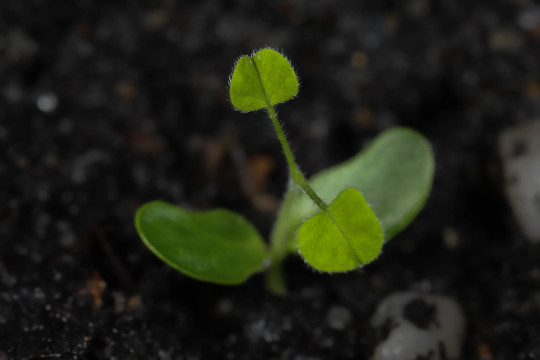
Grona varians
Cotyledons and First true leaves
Image taken 20 days after seed scarified and plated on water agar and incubated at 20C and 13 days after potted in soil.
0 notes
Text
My Garden Flowers Part 4
All photos mine. The Pennsylvania pellitory is edited for because the plant app I took the photo in washed it out. The scarlet bee balm is edited for colour because that old phone's camera sucked.























In order of appearance:
091. Pennsylvania Pellitory (Parietaria pensylvanica) A common garden weed, but as it's native it can stay in some places.
092. Perennial Flax (Linum perenne) In spite of the name she sadly didn't come back or reseed. Shame because she looked really nice in that area. Oh well. I'll have to try in another spot.
093. Showy Tick-Trefoil (Desmodium canadense) She tricked me! I thought she hadn't made it as she hadn't come up by late June so I got another one and put her in a different area...only for this one to come up. And if you're thinking, oh, she's just a late bloomer, I should have waited, well, she came up in May this year. Because of course she did.
094. Virginia Mountain Mint (Pycnanthemum virginiana) She smells like something you'd want to season steak or something with and would probably do very well at that but I've never cooked a steak before. Maybe I'll try her in pesto some day.
095. Devil's Tongue (Opuntia humifusa) She flowered for the first time last year and is flowering again this year!
096. Fragile Prickly Pear (Opuntia fragilis) Not pictured as she hasn't flowered yet. She's still quite little. I might break off a piece of her to try growing in that really tough spot. If she can survive summer to winter in a pot, surely that area shouldn't be too harsh for her.
097. Thrift Seapink (Armeria maritima) She's tough enough to survive winter in a pot and did so for three years, but last winter was apparently too much for her. Again, I think it was just too dry. She was pretty much only happy there in the spring and fall, though, so maybe it's just as well. The new one I planted elsewhere seems happy in all seasons.
098-099. Lance-Leaved Tickseed (Coreopsis lanceolata) Usually only the cultivars have those red markings! I'm assuming there's been some cross-pollination with other gardens because I did not plant that. My tickseeds are all straight amber. Unless she independently produced the colour on her own as a sport. Interestingly enough, none of them are showing that colouration this year.
100. White Sagewort (Artemisia ludoviciana) I wasn't actually supposed to have this one. I'd ordered the less aggressive A. frigida, but oh well. Maybe she'll attract American lady butterflies some year. Not pictured as she hasn't flowered yet. She smells like something you'd use to season stuffing.
101. Blue-Eyed Grass (Sisyrinchium angustifolium) After several attempts in different areas, trying my hardest to follow what the information online said she would need, but somehow failing, this one at last seems to be doing fine.
102. Dotted St. John's Wort (Hypericum punctata) I didn't plant that. Either a gift of the wildlife or a dormant seed came to life when I removed the grass.
103. Roundhead Bushclover (Lespedeza capitata) Another one I've had several attempts with, but she seems to like it there.
104. Curlycup Gumweed (Grindelia squarrosa) Flowered nicely that year and I thought she didn't reseed because she didn't come up last year but there is a plant this year! It's good to remember that seeds can lie dormant for some time. :)
105. Upright Prairie Coneflower "Mexican Hat" (Ratibida columnifera) This is a cultivar and has since passed away during the winter.
106. Rocky Mountains Bee Plant (Cleomella serrulata) She reseeded for several years but apparently not this one. Hopefully they're just skipping a year and will come up next spring. If not I'll have to attempt a different area. Anyway, pretty much the whole plant is edible with preparation, and lots of insects love the flowers.
107. Spotted Horsemint (Monarda punctata) Beloved of many insects. Sometimes I just like to sit next to her and watch the activity.
108. Wild Black Sweet Tomato (Solanum ptychanthum) She began as a weed on this property, but not anymore. She is a welcome part of my native garden with her wonderful fruits in the summer.
109. Common Sunflower (Helianthus annuus) The wild type this time, but no evidence of reseeding this year. :(
110. Alpine Rock Cress (Arabis alpina) She flowers in April before most trees have even blossomed.
111. Field Chickweed (Cerastium arvense) By the time I got to plant her in the fall some years ago, I was sure she'd die over the winter. She didn't but struggled through the warm months. But she managed to bounce back the following spring and makes a nice little carpet now.
112. Yellow Wild Indigo (Baptisia tinctoria) Not pictured as she hasn't flowered yet.
113. Butterflyweed (Asclepias tuberosa) Finally decided to flower this year! She is the only orange species of milkweed native this far north.
114. Upright Prairie Coneflower (Ratibida columnifera) The wild type. Didn't like that spot in the winter either, so I'm trying a different area this year.
115. Fringed Blue Aster (Symphyotrichum ciliolatum) Not the most colourful or compact, but makes a nice spray of pale blue violet over her dark green foliage.
116. Bluestem Goldenrod (Solidago caesia) Not pictured as she hasn't flowered yet, but she's likely to this year.
117. Black Walnut (Juglans nigra) She's been on the property long before I got here. Not pictured as I haven't gotten any pictures yet since she is very tall.
118. Field Pussytoes (Antennaria neglecta) Compact and low-growing foliage create a mat, with these delicate stems poking out with what looks like kitten toes that pass for the plant's flower.
119. Aster (Symphyotrichum) I don't know what she is yet, but she decided to take up residence with my pussytoes and I guess that's okay. Haven't gotten pictures of the flowers yet.
120. Dotted Blazing Star (Liatris punctata) Not pictured as she hasn't flowered yet.
#blackswallowtailbutterfly#my photos#photography#my garden#garden flowers#native plant gardening#Parietaria pensylvanica#Linum perenne#Desmodium canadense#Pycnanthemum virginiana#Opuntia humifusa#Armeria maritima#Coreopsis lanceolata#Sisyrinchium angustifolium#Hypericum punctata#Lespedeza capitata#Grindelia squarrosa#Ratibida columnifera#Symphyotrichum ciliolatum#Antennaria neglecta
8 notes
·
View notes
Text


08/09/23 - Fabales: Desmodium tortuosum


08/09/23 - Fabales: Grona triflora


08/09/23 - Lamiales: Ruellia tuberosa


08/09/23 - Commelinales: Commelina cyanea


08/09/23 - Fabales: Desmodium scorpiurus
Small handful of 'weed' plants found in the suburbs.
QLD:BRB - Townsville
#Ruellia tuberosa#Popping Pod#Desmodium tortuosum#Florida Beggarweed#Commelina cyanea#Scurvy Weed#Desmodium scorpiurus#Samoan Clover#Grona triflora#Creeping Tick Trefoil#Fabales#Commelinales#Lamiales#Liliopsida#Monocots#Angiospermae#Flowering Plants#Tracheophyta#Vascular Plants#Plantae#plants#Magnoliopsida#Dicots#flora#botany
4 notes
·
View notes
Text
be me
find a cool plant in the park
be curious and search online to see what species it is
it's been three fucking hours you have 46 windows open and your life and confidence in your plant knowledge are ruined forever
#''its leaves have three folioles but sometimes they can have only one n they have trichomas but sometimes not UwU'' FUCK OFFFFFFFF#Me: ''hmmm this description checks out and based on the other ones I've seen I'm pretty sure now it must be Desmodium Adscendens''#*scrolls up*#*page is titled 'Desmodium Incanum'*#I WALK FIVE MINUTES IN THE PARK AND MY CLOTHES GET COMPLETELY COVERED WITH THE SEEDS OF THESE FUCKERS WHY CAN NOBODY TELL ME WHAT THEY ARE#biology#plants#plant biology#argentina
2 notes
·
View notes
Text

Little wildflower in the legume family. I think it's Desmodium paniculatum?
0 notes
Photo

Scientific Name: Desmodium paniculatum
Common Name(s): Panicled ticktrefoil, panicled-leaf ticktrefoil
Family: Fabaceae (pea)
Life Cycle: Perennial
Leaf Retention: Deciduous
Habit: Forb
USDA L48 Native Status: Native
Location: Plano, Texas
Season(s): Summer
Fruits (seedpods). See the flowers here.
#Desmodium paniculatum#panicled ticktrefoil#panicled-leaf ticktrefoil#Fabaceae#perennial#deciduous#forb#native#Plano#Texas#summer#fruit#green#plantblr
0 notes
Text

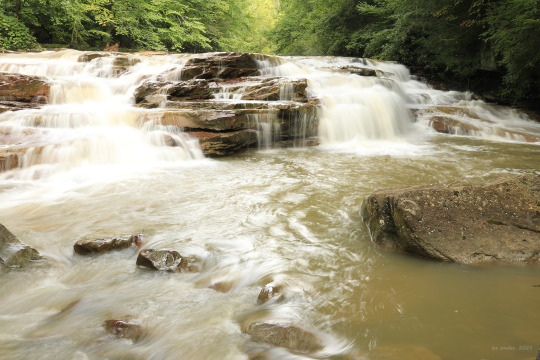


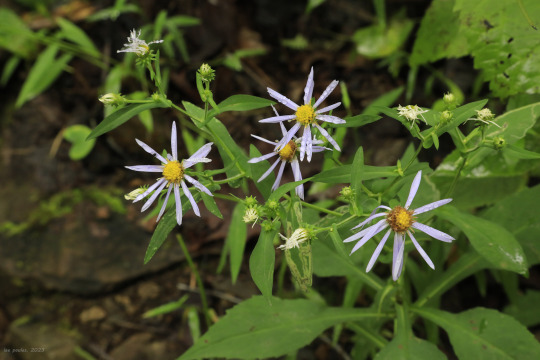
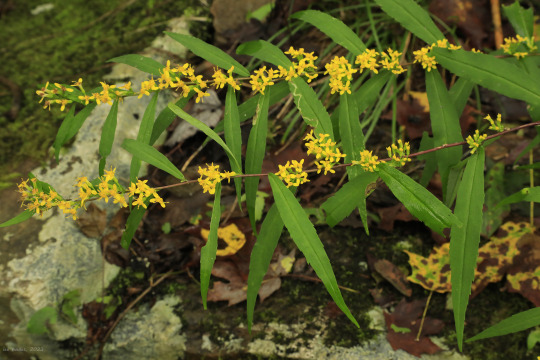
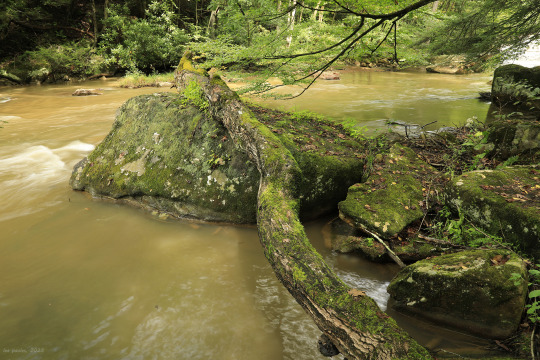
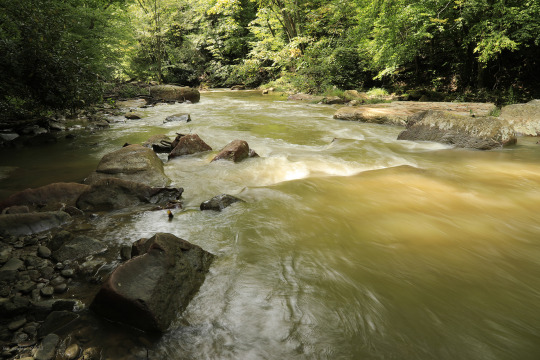
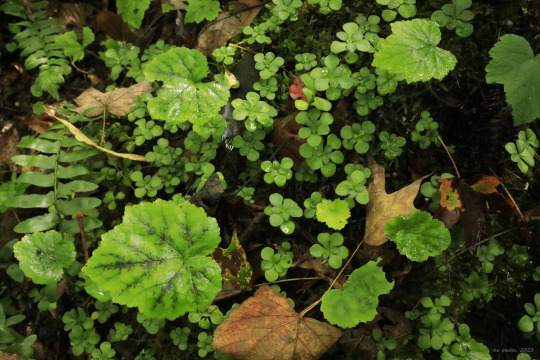

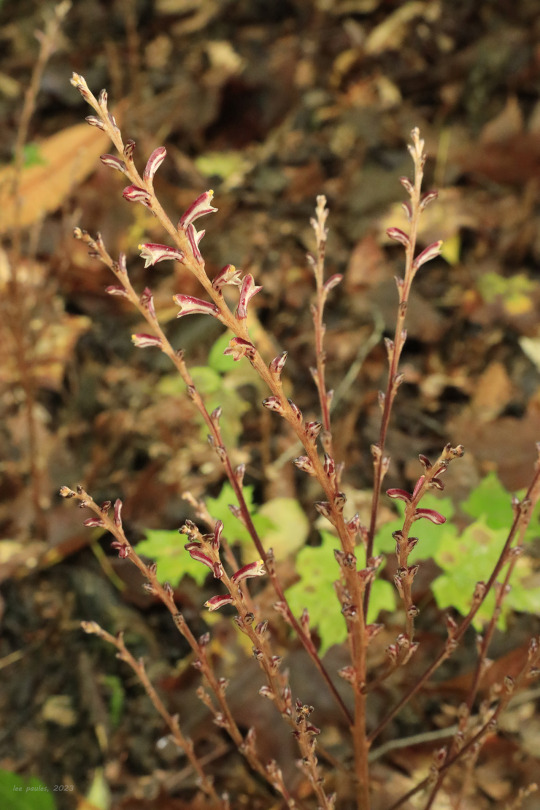
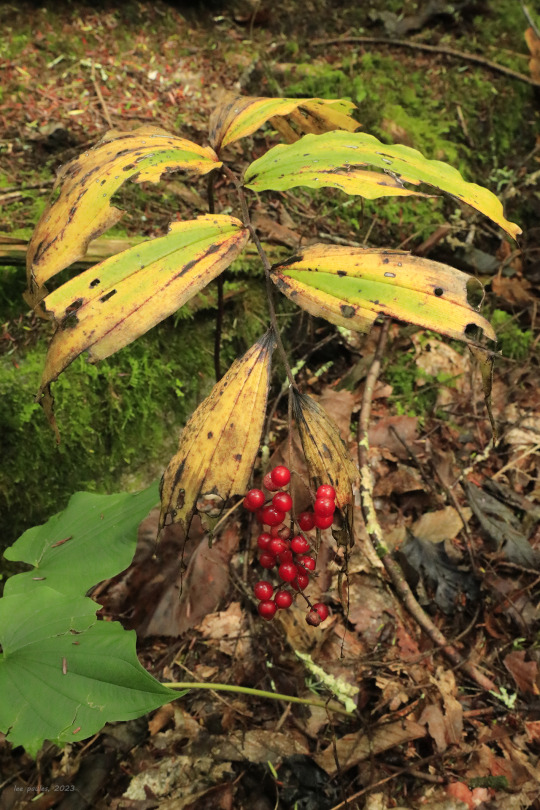
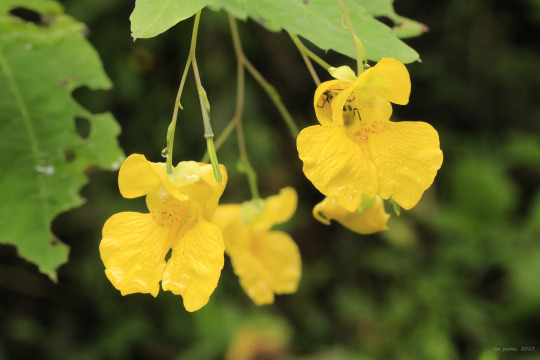
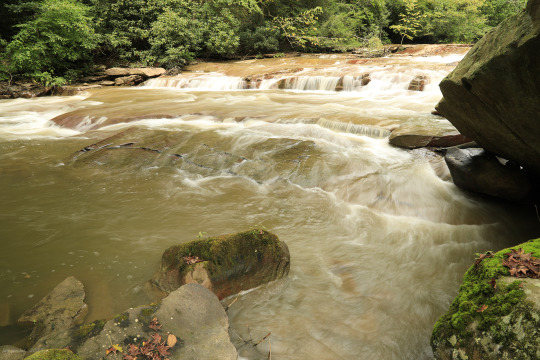

Despite its undignified name, Muddy Creek is a lovely mountain stream that normally runs fast and clear on its steep descent to Cheat River. But after a week of heavy rain in NC-WV, the stream looked a bit murky yesterday. Not even the sediment washing away from the mountains dims its beauty in my eyes. And the enchanting, moss-encrusted forest along its bank holds its own late summer treasures.
From top: great blue lobelia (Lobelia siphilitica), which pairs beautifully with cardinal flower to provide late summer color in a native wildflower garden; white wood aster (Eurybia divaricata), which is the most common of the shade-loving white asters in this area; crooked-stemmed aster (Symphyotrichum prenanthoides), also known as zigzag aster, whose clasping, spatula-shaped leaves distinguish it from big-leaf aster, another woods-loving aster with lavender flowers; blue-stemmed goldenrod (Solidago caesia), whose spreading, yellow-flowered stems provide stunning late-season color in a native wildflower garden; an intensely-green collage of moss, woodland stonecrop (Sedum ternatum), Christmas fern (Polystichum acrostichoides) and heartleaf foamflower (Tiarella cordifolia), which I am trying hard to reproduce in my own native wildflower shade garden; the shaggy-maned stem of Coker's Amanita (Amanita cokeri), one of the most impressive mushrooms of Appalachia's summer forests; beech-drops (Epifagus virginiana), a parasitic plant that grows and subsists on beach tree roots; the bright red berries of false Solomon's seal (Maianthemum racemosum); yellow jewelweed (Impatiens pallida), whose explosive seed pods give the plant its other common name, pale touch-me-not; and narrow-leaved tick-trefoil (Desmodium paniculatum), also known as panicled tick-trefoil, a late summer pea whose sticky seed pods commonly hitch rides on shoes and boots.
#appalachia#vandalia#west virginia#wildflowers#flora#summer#muddy creek#cheat river#preston county#fungi#coker's amanita#great blue lobelia#white wood aster#crooked-stemmed aster#zigzag aster#blue stemmed goldenrod#woodland stonecrop#christmas fern#heartleaf foamflower#beech-drops#beech drops#false solomon's seal#solomon's plume#yellow jewelweed#pale touch-me-not#narrow-leaved tick-trefoil#panicled tick-trefoil#falls#rapids#mountain stream
103 notes
·
View notes
Text
talking on this website is even more like talking into a void than twitter bc pretty much NO ONE will see it ever especially without hastags
anyway my current thought is, i wanna get a whole bunch of coneflower, aster, goldenrod, milkweed, thistle, desmodium, lobelia, etc seeds, make seed bombs out of them, and throw them in the deserted front lawn of a house that burnt down last summer in my neighborhood but hasn't been demolished bc of some insurance thing or something. rn that lawn is looking super overgrown as is bc it's been fenced off and has not been mowed for almost a year atp but i think it needs a little boost so that stuff other than grasses and ragweed grow there. i feel like i could turn it into a cool area for attracting pollinators if i tried, this stupid suburb is definitely in need of a little free-growing nature, and since the area is fenced off and not being mowed, it's not likely to be disturbed anytime soon, at least until they finally decide to demolish the house and rebuild
9 notes
·
View notes
Text
IA2 Prep: Botany (Taxonomy)
Fabaceae - Pea Family
Classification:
Spermatophyta
Angiosperms
Dicotyledons
Polypetalae
Calyciflorae
Rosales
Fabaceae
Derivation of Classification:
Spermatophyta: Seed bearing plants.
Angiosperms: Seeds enclosed within a fruit.
Dicotyledons:
1) Tap root system
2) Dorsiventral leaves
3) Reticulate venation
4) Mostly pentamerous flowers
5) Seed with two cotyledons
Polypetalae:
1) Perianth present; differentiated into calyx and corolla
2) Petals free
Calyciflorae:
1) Flowers actinomorphic or zygomorphic
2) Hypogynous, perigynous, or epigynous
3) Cup shaped thalamus called calyx tube may be present
4) Stamens 10-many, inserted on the calyx tube
5) Monocarpellary gynoecium with marginal placentation
Rosales:
1) Leaves alternate and stipulate
2) Flowers bisexual
3) Actinomorphic or zygomorphic
4) Monocarpellary
Family:
Distribution: This family includes 600 genera and 12800 species, cosmopolitan distribution.
Habitat: Terrestrial mesophytes. Exceptions:
Aeschynomene - hydrophyte
Alhagi maurorum - xerophyte
Habit:
Mostly herbs - Pisum spp., Medicago
Few shrubs - Tephrosia, Crotolaria
Some trees - Butea frondosa (aka flame of the forest), Erythrina
Some herbaceous stem climbers/twiners - Dolichos, Clitoria.
Herbaceous tendril chambers - Pisum spp, Lathyrus spp.
Root System: Tap root system with bacterial nodules. These plants are used in crop rotation and as green manure.
Stem: Aerial, erect or climbing, strong or weak, solid, branched, herbaceous or woody, cylindrical or angular, smooth or hairy.
Leaves: Alternate, mostly compound
Unipinnately compound - Clitoria, Tephrosia, Pisum.
Pinnately trifoliate - Dolichos
Palmately trifoliate - Crotolaria
Simple - Crotolaria retusa
Stipulate or Exstipulate, stipules are foliaceous in Lathyrus
and Pisum. They take on the function of photosynthesis.

In Pisum the terminal leaflets are modified into tendrils.
In Lathyrus the entire leaf is modified into tendrils.
In Dolichos and Clitoria the leaflets are stipelate.
Leaf is petiolate, pulvinous leaf base, leaflets – ovate, oblong, margin entire, apex acute, obtuse or retuse, pinnately reticulate venation.
In Desmodium gyrans (Indian telegraph plant) the central leaflets
exhibit autonomous movements in response to variation in
temperature.
Inflorescence: Axillary or terminal, racemose – simple raceme, solitary in Cicer.
Flower: Bracteate, pedicellate, bracteolate (Crotalaria, Clitoria) or ebracteolate (Dolichos, Tephrosia), actinomorphic, zygomorphic, complete, bisexual, hypogynous, pentamerous.
Calyx: 5 sepals, gamosepalous, valvate aestivation and persistent, odd sepal anterior in position.
Corolla: 5 Petals, polypetalous, papilionaceous corolla or butterfly shaped.
The large outermost posteriorly placed petal is called standard/vexillum; it overlaps the two median lateral petals called wings/alae; which in turn overlaps two antero-lateral petals called keel/carina.
Descendingly imbricate aestivation or vexillary.
Androecium: Ten Stamens,
Mostly diadelphous - Tephrosia, Dolichos and Clitoria.
Crotolaria: five long and five short, monoadelphous condition,
Dalbergia spp: 9 stamens, monoadelphous.
Anthers are dithecous, introrse, basifixed, or dorsifixed.
Gynoecium: Simple, monocarpellary. Ovary superior, long cylindrical (Pisum) or laterally compressed (Crotolaria).
Gynophore may be present. Style long, terminal but at the
base in Crotolaria it bends ends in hairy stigma.
Fruit: Legume or pod
Seed: Seeds are endospermic
Floral Formula: ?? how-

Economic Importance:
Most of the crops are used as fodder for cattle.
Pulses: Pisum sativum - Garden pea, Glycine max - Soybean
Vegetables: Phaseolus vulgaris - Kidney bean
Oils: Arachis hypogea - Groundnut
Timber yielding: Dalbergia latifolia – Indian Rosewood,
Indigofera tinctoria – the leaves yield indigo dye used in dyeing and printing cotton and rayon and pigments for paints and ink.

------------------------------------------------------------------------------
Chemotaxonomy
The chemical constituents of plants differ from one species to another
They are restricted to certain taxa, making them valuable characters for plant classification.
The classification of plants on the basis of chemical contents is called chemotaxonomy or chemical taxonomy.
The following chemicals are present in plants and accounted for classification:
- Non-protein amino acids
- Phenolics
- Betalins
- Alkoloids
- Terpenoids and Steroids
- Crystals
- Immunological reactions
1) Non-protein Amino Acids
There are 300 non-protein amino acids in plants
Some are restricted to certain groups alone
They are used to classify and distinguish the taxa from others
Ex: Lathyrine in genus Lathyrus
Ex: add one more
2) Phenolics
Derivatives of phenolic compounds
Plants are classified on the basis of specific phenolic compounds.
Ex: Flavonols and methoxy cinnamic acid - herbaceous plants
Ex: Leucoanthocynin - woody plants.
3) Betalins
Derivatives of phenols serving as pigments.
They are present in only 10 families.
Ex: The position of the family Cactaceae was disputed for many years, but on the basis of the presence of betalins, it's position in centrospermae has been confirmed.
4) Alkaloids
Nitrogen containing compounds with a heterocyclic ring.
There are about 5000 different alkaloids in angiosperms.
They are used as a source for plant classification.
Ex: Lupin - Fabaceae
Ex: Tropane - Solanaceae
Ex: Morphine - Papaver somnifer
5) Terpenoids and Steroids
Terpenoids are unsaturated hydrocarbons derived from isoprenes
Ex: Carotenoids, iridoids
Steroids are saturated hydrocarbons with four rings in their structure
Ex: Cucurbitins present in Cucurbitaceae
6) Crystals yay
Some plants have raphide crystals in different parts of their body.
The forms of crystals are used to some extent in the classification of plants.
Ex: Presence and absence of raphides are used in the grouping of plants in the family Rubiaceae
Calcium oxalate crystals are present in the ovary walls of the members of Asteraceae.
7) Immunological Reactions
The storage protein or pollen protein is injected from the plant body to a test animal (usually a mouse or rabbit)
The test animal produces antiserum against the protein
The antiserum is mixed with the plant extract to detect the precipitate formed by antigen-antibody reaction.
The nature and amount of precipitate indicate the relationship of the protein to the plant.
High rate of precipitation indicates closeness of the plants.
Low rate shows that the plants are not related.
This type of study is called serotaxonomy.
Ex: Closeness of Delphinium to Aconitumis has been confirmed by serological studies.
------------------------------------------------------------------------------
Embryology in relation to taxonomy
Schnarf, a German embryologist, studied the role of embryology in 1931.
The angiosperm embryological characters of importance are: anatropous, double fertilization, triple fusion, post fertilized triploid endosperm, and dicot or monocot conditions.
Embryology in relation to taxonomy can be observed at three levels: above family level, at family level, and at generic level.
Above Family Level
1) Caryophyllales
Commonly known as centrospermae
Have trinucleate pollen
Bitegmic crassinucellate ovule
Curved and peripheral embryo
Perisperm with or without endosperm.
2) Helobia
Have helobial type of endosperm
-(a cell wall is laid down between the first two nuclei, after which one half develops endosperm along the cellular pattern and the other half along the nuclear pattern.)-
3) Gentinales
Lack of integumentary tapetum
Have nuclear endosperm
Buddleiaceae and Oleaceae have integuments and cellular endosperm
4) Orchidales
Have an undifferentiated embryo
Very little to no endosperm
At Family Level
1) Podostemaceae
Includes perennial aquatic herbs with unique embryo features such as:
Pseudo embryo sac
Bisporic type of embryo sac
Pollen grain in pairs
Tenuinucellate bitegmic ovule
Presence of suspensor
2) Onagraceae
-(THe one where the megaspore divides one less time, only forming 4 nuclei instead of 8)-
Monosporic 4 nucleate, oenothera type embryo sac (with the exception of trapa)
Embryo sac derived from micropylar megaspore of tetrad
Only egg apparatus, 2 synergids, and one polar nucleus form.
Antipodals and one polar nucleus absent.
3) Cyperaceae
Microspore mother cell only gives one funtional microspore
4) Loranthaceae
Actually has 2 sub families, Loranthoideae and Viscoideae
i) Loranthoideae
Triradiate pollen
Polygonum embryo sac
Composite endosperm
Presence of suspensor
Polyembryony
ii) Viscoideae
Spherical pollen
Allium type embryo sac
Non-composite endosperm
Absence of suspensor
Polyembryony
The subfamilies have recently changed to Loranthaceae and Viscaceae respectively
At Generic Level
1) Trapa
Kept under Onagraceae (B&H) and Trapaceae (Englerian)
Evidence for both: -(WTF DOES THIS MEAN)-

2) Paeonia
Used to be included in Ranunculaceae (characters not present), now in Paeoniaceae
Generative cells are longer and elongated
Embryo sac long and narrow
Seed coat is massive
Germination epigeal
3) Exocarpus (Previously Santalaceace)
Initially placed in Exocarpaceae (under gymnosperms) due to the presence of naked ovules and pollen chamber.
But later it was confirmed to be Santalaceae due to the:
Presence of angiospermic flowers
Polygonum embryo sac
Cellular endosperm
And transverse division in zygote
4) Butomus
Polygonum embryo sac
Other genera of the family Butomaceae process Allium type embryo sac
With the exception of Butomus, all other genera have been transferred to Alismataceae
WHAT DOES ANY OF THIS MEAN? IDK.
1 note
·
View note
Text
Bidens pilosa Linn. Aqueous Extract against Postharvest Fungal Pathogens

Abstract
A bioassay was conducted to assess the antifungal effects of the different concentrations of Biden pilosa Linn. aqueous extract against fungal pathogens isolated from corn and peanut seeds. The assay employed the disk diffusion technique to determine the effects of the diffusible metabolites from B. pilosa on the growth of the fungal species on potato dextrose agar (PDA). The aqueous extract showed significant activity against Aspergillus flavus, A. niger, Fusarium sp., and Penicillium sp. from corn seeds. The best antifungal activity was observed in A. niger with inhibitory zones as wide as 19.72mm in diameter. On the other hand, the fungal isolates from peanut namely, A. flavus, A. niger, Penicillium sp., and Rhizopus stolonifer showed sensitivity to the aqueous extract from B. pilosa. The best antifungal activity was recorded in Penicillium sp. with the widest zone of inhibition of 24.87mm at 24 hours after incubation (HAI). This in vitro study, therefore, confirms that the B. pilosa aqueous extract inhibits the growth of fungal species associated with corn and peanut seeds.

Introduction
Corn and peanut seeds are vulnerable to pathogenic fungal species before and after harvesting. Their association with the stored seeds may eventually result in the deterioration of seed quality. Although stored seeds apparently look healthy because of the absence of physical damage, however, these may be contaminated with high levels of mycotoxins produced by certain species of fungal pathogens. Mycotoxins are fungal metabolites that cause grain quality deterioration, poor germination potential, and reduced vigor. To prevent these problems, different control strategies should be employed such as irradiation, chemical treatment, and biological control. However, irradiation of seeds before storage is costly while the application of chemical treatments poses hazards to humans and animals. With these issues at hand, one of the promising options is the application of botanical pesticides.
Several studies had been conducted on the use of weed extract to control the growth of plant pathogenic organisms. The water extracts from the weed species (A. conyzoides, Oxalis corniculata, Phyllanthus debilis, Vernonia cinerea, and Desmodium trifolium) were assayed for their antifungal activity against some plant pathogenic fungi (Iqbal et al., 2001).
The extract from A. conyzoides inhibited the mycelial growth of Rhizoctonia solani, Aspergillus niger, and Phomopsis theae. In another study, the extract from O. corniculata was active against A. niger while P. debilis suppressed the growth of P. theae. The activity generally declined after three days of incubation, while A. conyzoides remained active for nine days after incubation. Ethanolic extract of Datura stramonium also contains significant antifungal potential against some important plant pathogenic fungi and thus, could be used as an alternative to chemical fungicides for the management of fungal infection in plants (Sharma et al., 2014).

There were previous studies on Bidens pilosa, a common weed species in the tropics, focusing on its antibacterial effects against human pathogens. Silva et al. (2014) evaluated nine extracts from B. pilosa (root, stem, flower, and leaves) and Annona crassiflora (rind fruit, stem, leaves, seed, and pulp) against 60 oxacillin resistant Staphylococcus aureus (ORSA) and S. aureus ATCC6538. They found that extracts from the leaves of B. pilosa had significantly wider inhibition zone diameters than chlorexidine against ORSA, and the extracts were more active against S. aureus ATCC. The presence of variable alkaloids, flavonoids, tannins, and saponins was observed which may be responsible for its antibacterial activities.
The antifungal properties of B. pilosa were documented in some studies involving plant pathogenic fungal species. Deba et al. (2007) first evaluated the antifungal potential of this plant against Corticium rolfsii, Fusarium solani, and Fusarium oxysporum using the hot water extracts from the roots, stem, and leaves. They found that C. rolfsii was most suppressed as its growth was reduced almost all the tested doses followed by F. oxysporum and F. solani. Extracts from stems and roots exhibited greater fungicidal action than the extracts from the leaves. In another experiment, the team also demonstrated the antifungal effects of the essential oils and aqueous extracts from the flowers and leaves of B. pilosa using the three fungal species. They again concluded that the extracts and oils had antifungal activity on the fungal pathogens (Deba et al., 2008).
Polyacetylenes, polyacetylene glycosides, flavonoids, flavone glycosides, aurones, chalcones, okanin glycosides, phenolic acids, terpenes, pheophytins, fatty acids, and phytosterols are among the chemical ingredients identified or isolated from the various portions of B. pilosa (Xuan & Khanh, 2016). Many of these have been identified as bioactive chemicals with pharmacological potential.
According to Silva et al. (2011), as cited by Bartolome et al. (2013), 201 compounds have been identified from this plant as compiled previously, comprising of 70 aliphatics, 60 flavonoids, 25 terpenoids, 19 phenylpropanoids, 13 aromatics, 8 porphyrins, and 6 other compounds.
This study focused on the assay of B. pilosa aqueous extract against common fungal pathogens associated with corn and peanut seeds. The antifungal effect of the extract was determined under in vitro conditions.
Source : Bidens pilosa Linn. Aqueous Extract against Postharvest Fungal Pathogens | InformativeBD
1 note
·
View note
Video
youtube
Günəş İşığı İlə Rəqs Edən Bitki: Desmodium Girans I 4K
0 notes
Photo
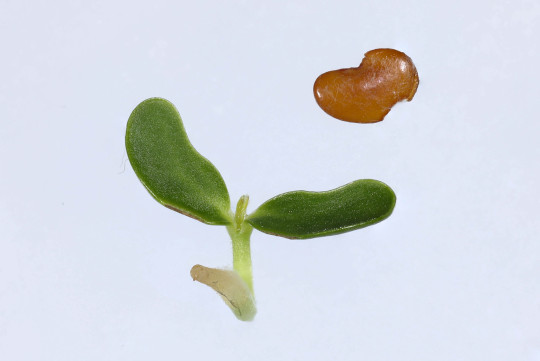
Grona varians
Cotyledons
Image taken 8 days after seed scarified and plated on water agar and incubated at 20C.
0 notes
Text
More flowers from my garden!
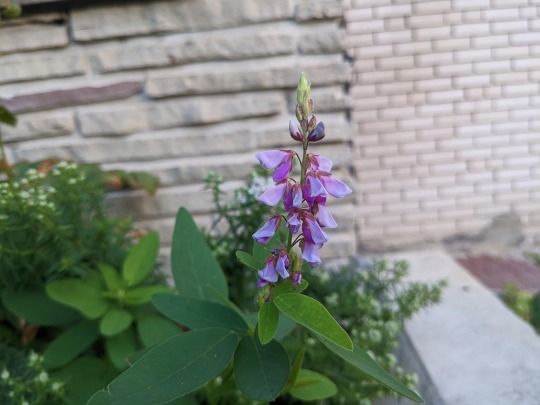
Desmodium canadense (showy tick trefoil)
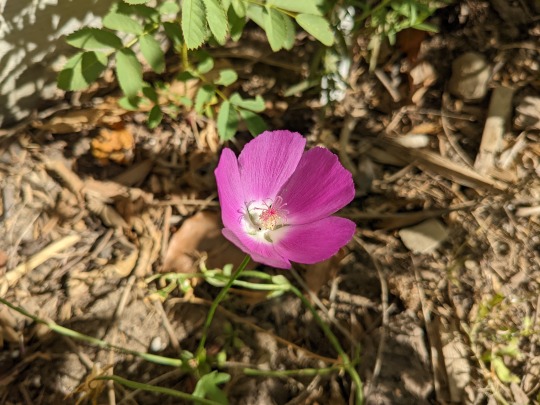
Callirhoe involucrata (purple poppymallow)

Pycnanthemum virginianum (Virginia mountain mint)
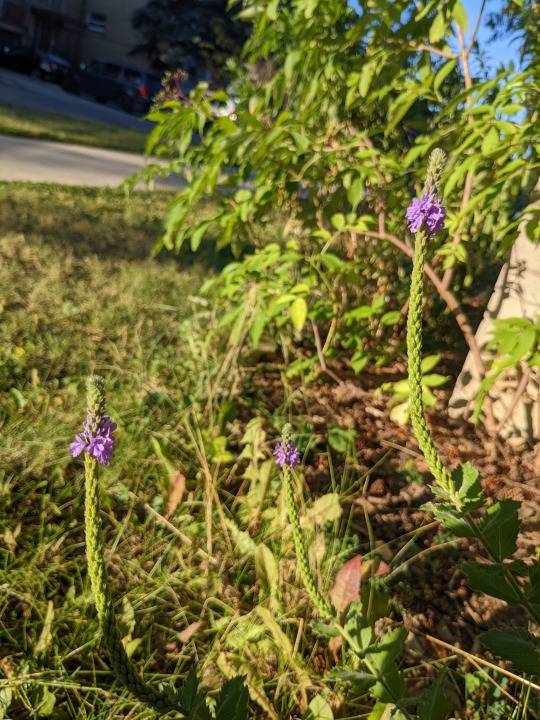
Verbena stricta (hoary vervain)

Eupatorium purpureum (sweet joe-pye-weed)

Monarda punctata (spotted beebalm)
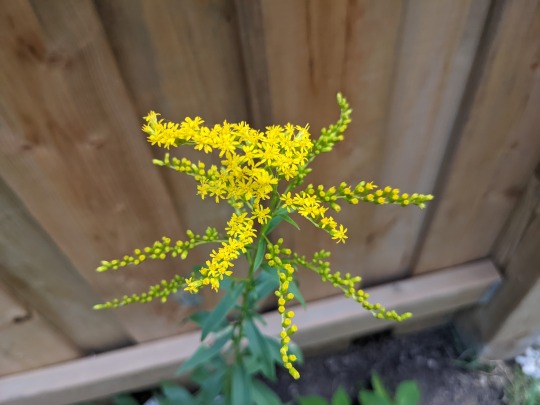
Solidago juncea (early goldenrod)
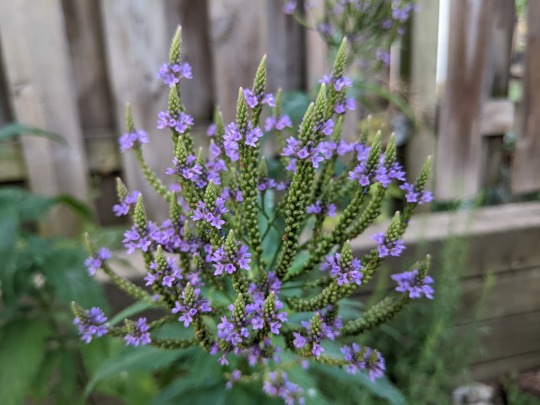
Verbena hastata (blue vervain)
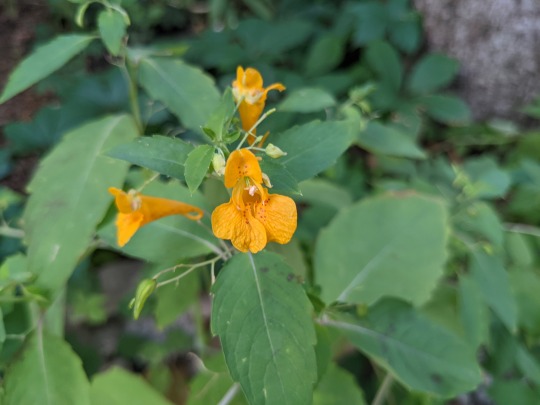
Impatiens capensis (spotted jewelweed)

Helianthus nuttallii (common tall sunflower)

Symphyotrichum ciliatum (fringed blue aster)
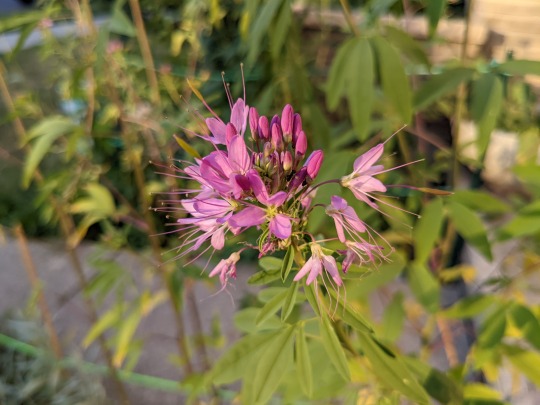
Cleome serrulata (Rocky Mountains bee plant)

Actaea racemosa (black snakeroot)

Helianthus pauciflorus (stiff sunflower)
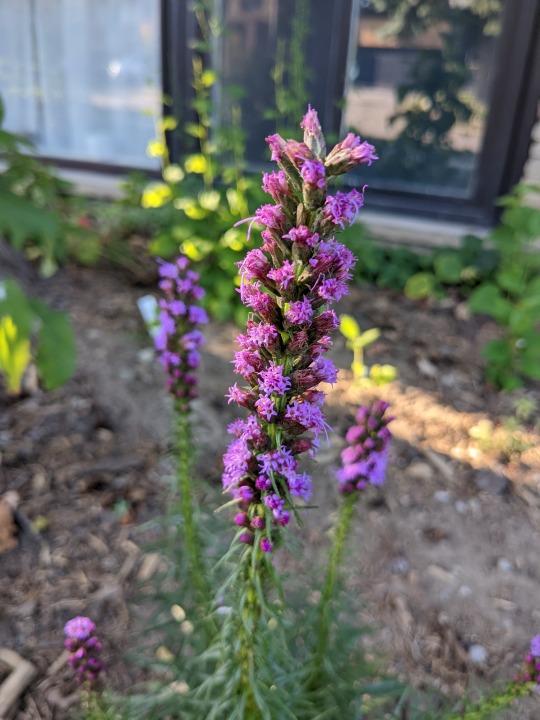
Liatris spicata (dense blazing star)

Hypericum punctatum (spotted St. John's wort)

Spiraea alba (meadowsweet)
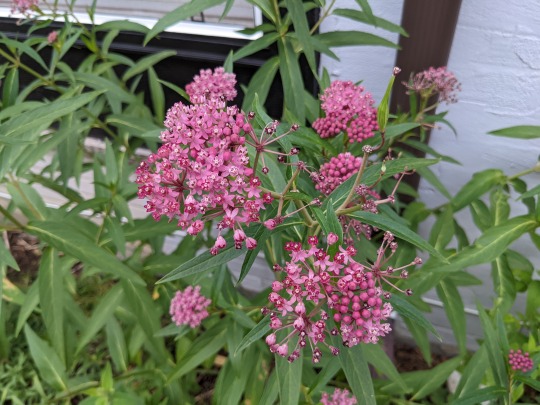
Asclepias incarnata (swamp milkweed)

Agastache foeniculum (anise hyssop)
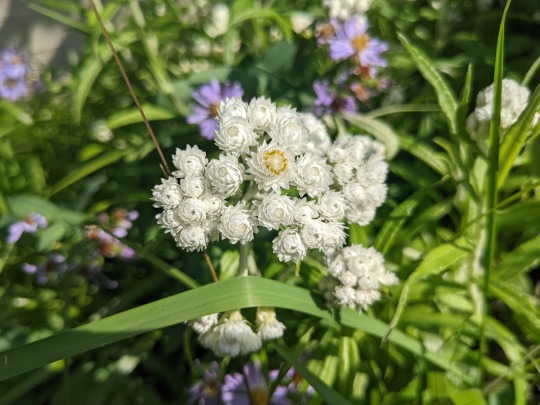
Anaphalis margaritacea (pearly everlasting)

Symphyotrichum laeve (smooth aster)
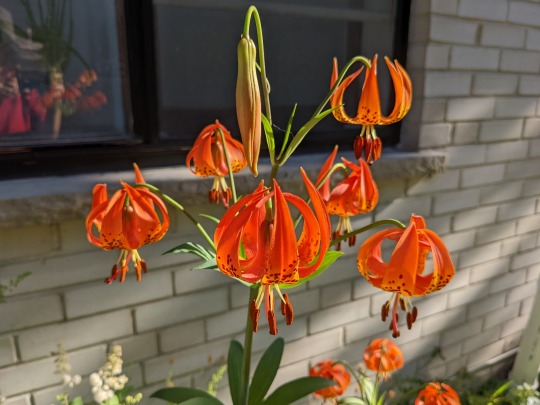
Lilium michiganense (Michigan lily)
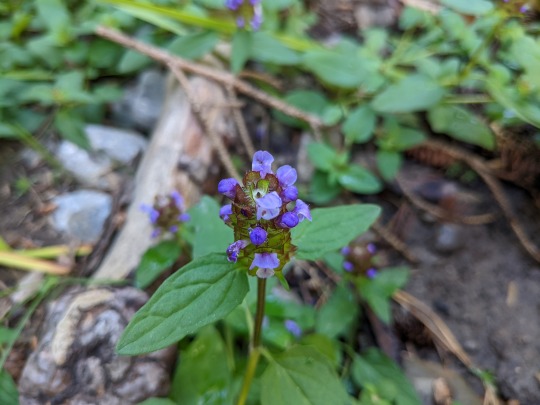
Prunella vulgaris ssp. vulgaris (common selfheal)

Symphyotrichum lanceolate (panicled aster)

Astragalus canadensis (Canada milk vetch)
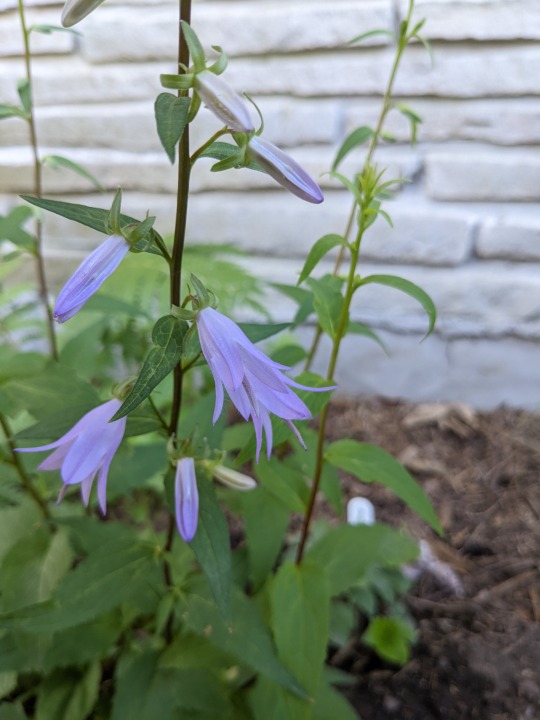
Campanulastrum americanum (marsh harebell)

Sambucus canadensis (common elderberry)

Mertensia paniculata (tall bluebells)
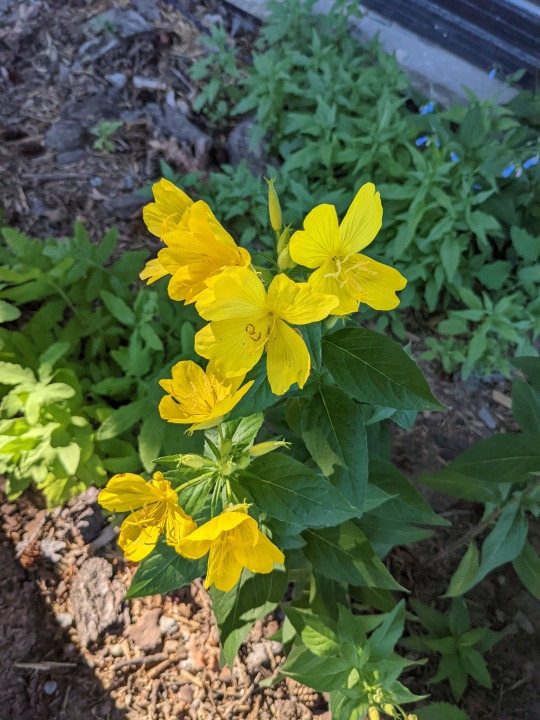
Oenothera fruticosa (narrow-leaved sundrops)

Lilium philadelphicum (wood lily)
And cut off again. lol
17 notes
·
View notes
Text
Discovering the Power of Strong Back Herb in Caribbean Tonic
Caribbean tonic drinks have long been celebrated for their refreshing flavors and health benefits, often derived from a blend of unique herbs and ingredients indigenous to the region. One such potent herb found in many Caribbean tonics is the strong back herb. Let's delve into the rich tradition of Caribbean tonics and explore the remarkable properties of the strong back herb.
Exploring Caribbean Tonic Traditions
Caribbean tonic drinks have been a staple in the region's culinary and medicinal traditions for centuries. These beverages are often crafted from a blend of locally sourced herbs, spices, and fruits, each chosen for its distinct flavor profile and therapeutic properties. From boosting energy levels to promoting overall well-being, Caribbean tonics offer a holistic approach to health and vitality.
The Power of Strong Back Herb
Among the various herbs used in Caribbean tonics, the strong back herb stands out for its potent medicinal properties. Also known as Desmodium adscendens, this herb is native to the Caribbean and is revered for its ability to support joint health and promote overall vitality. Traditionally used as a natural remedy for back pain and inflammation, the strong back herb is now gaining recognition for its wide range of health benefits.
Benefits of Strong Back Herb in Caribbean Tonic
When incorporated into Caribbean tonic drinks, the strong back herb adds a unique depth of flavor while providing a myriad of health benefits. From relieving muscle tension to improving circulation, this herb is prized for its anti-inflammatory and analgesic properties. Additionally, the strong back herb is believed to support kidney health and aid in detoxification, making it a versatile ingredient in traditional Caribbean tonics.
Creating Your Own Caribbean Tonic with Strong Back Herb
To harness the power of the strong back herb, consider crafting your own Caribbean tonic at home. Start by sourcing fresh or dried strong back herb from reputable suppliers. Combine the herb with other traditional ingredients such as ginger, turmeric, and citrus fruits to create a flavorful and invigorating tonic. Experiment with different ratios and combinations until you find the perfect blend that suits your taste preferences and health goals.
Embracing Caribbean Wellness with Jamrock Mart
Incorporating the strong back herb into Caribbean tonic drinks is a time-honored tradition that offers a holistic approach to health and wellness. To explore a wide selection of Caribbean herbs and ingredients, visit jamrockmart.com for authentic products and inspiration for your next tonic creation.
0 notes